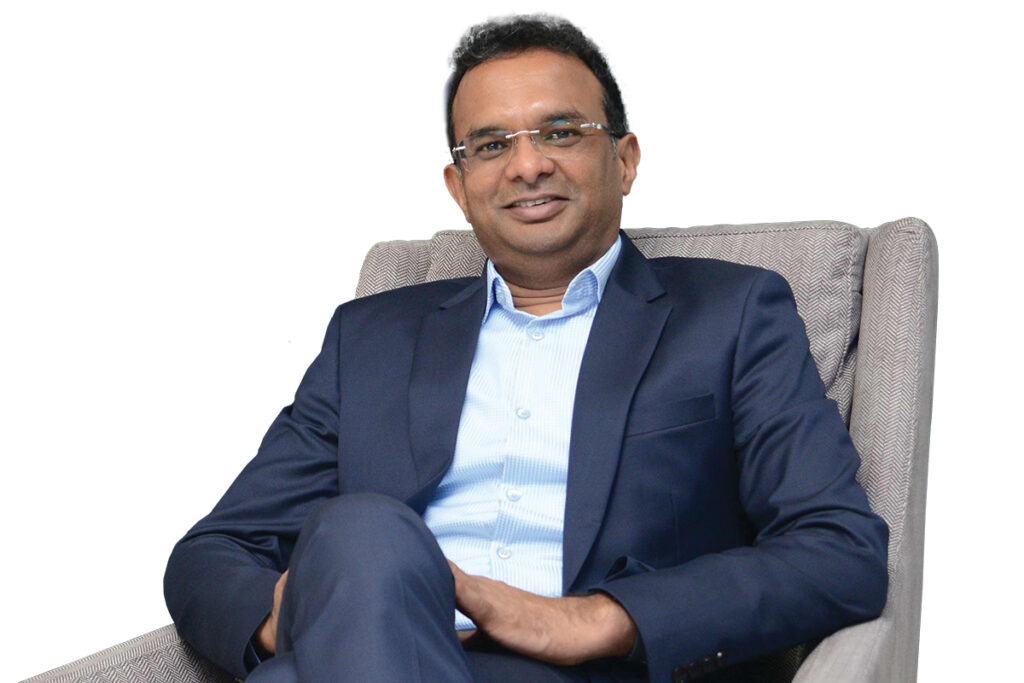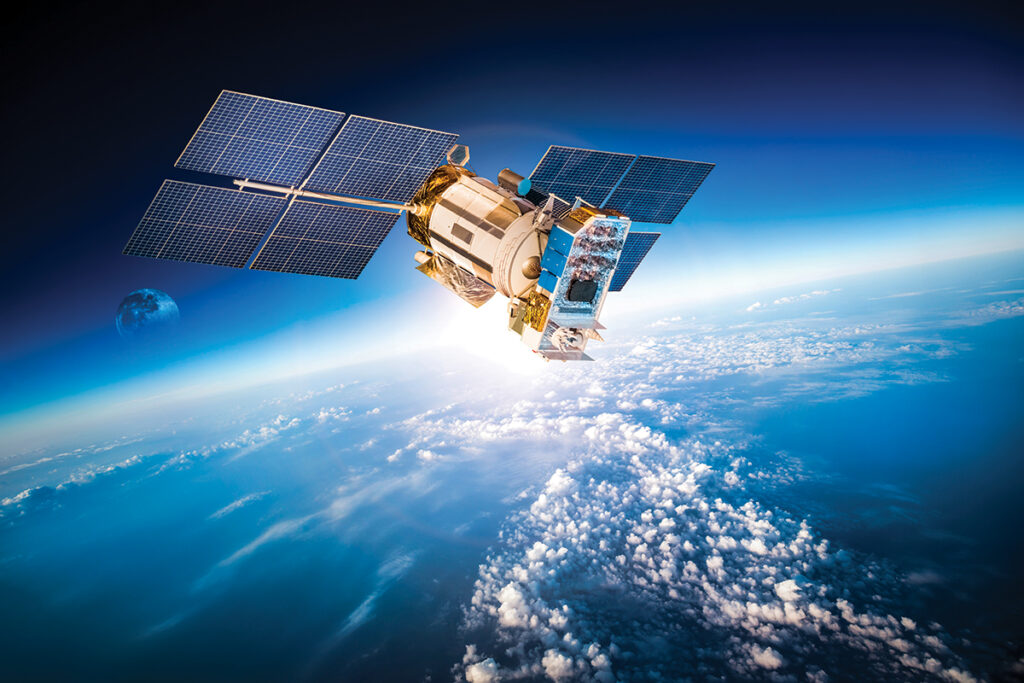Mirror, mirror on the wall, what does the wide, wonderful world of tech have in store for us all?
Words by Sunil David
Once again, we’ve reached the time of year when we look ahead at what technology has in store for us. The breakthrough technology trends that have made 2023 one of the most exciting years for innovation, especially in the Generative AI space, will continue to reshape our world in new and exciting ways.

As we stand on the cusp of 2024, it promises to be a pivotal juncture, with the technology landscape poised to undergo yet another transformative shift, propelled by innovative breakthroughs and ever evolving societal needs. It promises to reshape the way we live, work, interact, and engage with the world. From Generative Artificial Intelligence to sustainable technology solutions, technology is set to redefine the boundaries of what’s possible.
Looking ahead, it is not merely about the gadgets and algorithms that will
define our future. It’s also about the ethical quandaries we have to navigate, the responsibilities we shoulder, and the delicate balance we strike between progress and prudence. The digital age, with its promises and pitfalls, invites us not just to witness but to actively shape the contours of our technological destiny.
Here are some of the key technology trends that will impact businesses, individuals, and society at large in 2024.
Democratisation of Generative AI
We have seen Generative AI burst into the mainstream in 2023, which was driven by the convergence of massively pre-trained models, Cloud Computing powered by powerful GPUs, and the use of open source development models. This made these platforms accessible to users worldwide, and we are likely to witness Generative AI adoption to increase significantly in 2024 as enterprise use cases evolve and its disruptive potential is realised.

“We’re seeing investments worth billions go into Generative AI, with possibly unclear outcomes. That said, there’s no doubt that the availability of Gen AI platforms to a much larger user community will influence the role of tech in both professional and personal lives of individuals, allowing AI models to learn and evolve for the better.
2023 has showcased slow hiring in Tech talent. 2024 may continue to show similar trends for a majority of the traditional tech stack while the demand for new-age tech like Gen AI, IOT, and Industrial automation will continue to be on high demand.
The availability of Gen AI platforms to a much larger user community will influence the role of tech in both professional and personal lives of individuals, while allowing the AI models to learn and evolve for better.”
- Subhakar Kurly, Executive Chairman, Wissen
Over the last 12 months what clearly emerged was Gen AI having the power to spark creativity, through the creation of new and enriching content, be it text, images, videos, and music, all with the potential to drive productivity across different functions
of business. Goldman Sachs forecasts that the technology will deliver a $7 trillion boost in global GDP over the next decade.
As Generative AI finds its way into more of the applications from search engines to office applications like Word, PowerPoint, Excel, etc., which we all use every day, to design software and to collaborative applications like Teams, Zoom, etc., individuals and businesses will come to understand its true potential.
The Human–Machine collaboration paradigm that is playing out today will trigger enterprises to leverage the power of Gen AI to make the workforce more efficient and far more productive. A good example being Microsoft’s 365 Copilot, an AI assistant released this year that is designed for Microsoft 365 applications and services.
Generative AI’s impact on Industrial Sector
Generative AI can truly be a disruptive force that can transform enterprises, be it internally within their operations, improving employee productivity, or in customer engagement. For example, manufacturers can build solutions to reinvent industrial design and processes and thereby drive mass personalisation.

Examples abound. Volkswagen are leveraging Generative AI to enhance
automotive design. The AI algorithms analyse all the key design parameters, known manufacturing constraints, and considers safety regulations to generate optimised designs. This has enabled the development of innovative vehicle structures, better fuel efficiency, and greatly enhanced safety features.
Take Adidas, which utilises Generative AI to design and customise athletic footwear. The AI-driven platform that they use does a thorough analysis of athlete data, performance metrics, and specific design preferences to generate unique and highly personalised shoe designs. This enables Adidas to create products and customer experiences that cater to individual needs and preferences. We live in an Economy of Experiences, and what differentiates one brand from the other is superior customer experience.
Pharmaceutical and life sciences companies can leverage the power of Gen AI in drug discovery and research, significantly reducing the time to launch new drugs into the market. Banking and Financial services organisations can leverage Gen AI to offer products and services that are tailor-made to the specific needs of their customers.
Emergence of Multimodal Models
If 2023 has been all about LLMs (large language models), then 2024 is likely to be around MMMs (Multimodal Models). These models will be capable of receiving multiple modes of input, such as a piece of text, an image, or audio or video, and generating multiple modes of output.
Meta’s SeamlessM4T model is an example, combining both text and speech in a model designed to translate between almost 100 different languages. Open AI’s ChatGPT 4.0 and the newly released GPT 4 Turbo are examples of MMMs that are likely to see increased usage in 2024.
While there are challenges around ethics and regulations, potential misuse and AI hallucinations, legal concerns and algorithmic biases that still have to be addressed, I am of the opinion that 2024 will be the year when everyone starts to understand just how transformative Generative AI will be to individuals, enterprises, and society at large by addressing some of the biggest challenges that the world faces. This is the perfect time to experiment with new use cases, implement it responsibly with adequate safeguards in place, and harness the tremendous potential that Generative AI offers.
Sustainable Development and impact of Technology in meeting ESG goals
Sustainability Development will continue to take centre stage and be of key focus in 2024 as individual countries and enterprises continue to work on their ESG goals and attempt to meet their long term net-zero commitments. The sustainability landscape has gone through a significant transformation over the last few years and is now clearly seen as a strategic imperative and a key component of business operations.
Sustainability is good for business and the need to drive sustainability culture stems from the very top and has to permeate through the entire organisation.
Whilst many enterprises that have embarked on their sustainability journey have control to a certain extent on Scope 1 and 2 emissions, the real challenge will be addressing Scope 3 emissions where they would need to address sustainability and specifically CO2 emissions beyond their supply chain.
The onus will also be on individuals to do their part to minimise their personal impact on the environment, and this calls for significant behavioural change. For example, using environmentally friendly ways of doing things such as the usage of EV vehicles and public transport, optimising the use of water, and handling waste efficiently, especially e-waste.
There is also a need for novel and innovative solutions to environmental problems, such as carbon capture and storage, as well as using green and renewable energy technologies. The circular economy will become an important concept driven by three Rs (Reduce, Recycle, and Reuse). This will lead companies to Reduce where necessary, with Recyclability and Reusability directly integrated into products at the design stage.
As most nations undergo rapid urbanisation and economic growth, the imperative to balance economic development with environmental stewardship has never been more pressing. Sustainability has also become one of the most critical real estate priorities, calling for focussed efforts from enterprises globally.

As per research, the real estate sector contributes nearly 40% of the global carbon emissions and hence this demands immediate action towards decarbonisation across its entire value chain, and thus achieving a net-zero target by 2070. The real estate sector heavily relies on energy from fossil fuels for both construction of newer buildings and the maintenance of existing ones. It is therefore extremely vital for real estate firms to look at operations from a climate lens and introduce alternative best practices that can commit to meeting sustainability objectives.
The economic benefits of energy-efficient buildings, the resilience conferred by eco-conscious urban planning, and the enhanced quality of life for occupiers are some of the dividends that can be reaped from this endeavour. From innovative designs to cutting-edge energy technology solutions where the usage of sensors, edge gateways, OT-IT Integrated Platforms and Analytics, and AI engines can not just optimise energy, but also reduce energy usage and thereby lower energy bills. AI can accelerate the sustainability journey of organisations when it is effectively integrated and used, with the potential to optimise resource consumption and enhance the energy efficiency of buildings from anywhere between 10 to 40%.
Thus, AI has the potential to be a key asset in addressing climate change issues. Properties designed with energy efficient solutions, water conservation, converting waste into biofuel or fertiliser and eco-friendly materials have lower environmental footprint and operational costs. Sustainability initiatives require collaborative efforts from experts, stakeholders, and visionaries to serve as a catalyst for policy formulation and execute strategic initiatives. It also requires the entire ecosystem – the Government, Industry, Academia, and Citizenry – to work collaboratively towards building a sustainable world.
The challenges that developers and users of sustainable technology will be confronted with during 2024 will include a need to develop ethical and sustainable methods for sourcing and extracting materials needed for manufacturing devices, infrastructure demands created by changing consumer habits, such as the adoption of EVs which requires charging infrastructure, and potential disparities between different geographic or socio-economic groups in their ability to access sustainable alternatives.
We will also become increasingly alert to the presence of greenwashing, which is widely observed and with the intention to purely generate positive word-of-mouth around a particular sustainable technology.
Key cybersecurity trends to watch out for in 2024
As per recent reports, the prediction is that $8 trillion will be lost to cyber crimes by the end of 2023, and the potential loss to cybercrime will grow more than 15% year by year to reach $10.5 trillion by 2025. New and evolving cybersecurity threats that are getting increasingly sophisticated by the day has the global information security industry on high alert.

AI powered cyberattacks that involve ingesting malware, phishing, ransomware, crypto-jacking, and many more have placed the data and assets of governments, enterprises, and individuals at constant risk. We are likely to see more sophisticated AI-powered attacks, which will range from deepfake social engineering attempts to
automated malware that intelligently adapts in order to avoid detection.
Next-level phishing attacks are likely to be sophisticated social engineering attacks, involving users being tricked into giving attackers access to systems. Generative AI tools (such as ChatGPT) enable more attackers to make more personalised approaches. As IOT adoption increases and physical assets connect to the Internet, the threat vector widens significantly. As enterprises integrate Operational Technology (OT) with their IT systems, they are likely to encounter significant cyberattacks.
As per research by Fortinet, 92% of organisations across the world had more than 1 intrusion in the last 1 year and 65% of intrusion impacted OT systems, which resulted in lost hours and days of production.
State-sponsored attacks have also increased significantly over the last 2 years, with India being the most targeted country globally. As per a report “2023 India Threat Landscape Report” by Singapore based cybersecurity firm Cyfirma, state sponsored attacks against India were up by 278% in the last 3 years, with IT and BPO companies seeing the highest share of attacks. We also continue to suffer from a severe shortage of cybersecurity professionals.
Since cyber threats are becoming more sophisticated, the imperative to bring new solutions leveraging breakthrough technologies like AI to market is intensifying. AI will enable us to detect, evade, or neutralise cyber threats thanks to near real-time anomaly detection, smart authentication, and automated incident response.
Cyber Resilience
Given these significant challenges, what is really needed is a robust cyber resilient strategy to counter these ever-increasing threats. While the focus for organisations is to use the right set of cybersecurity tools and services that can prevent cyberattacks, the growing value placed on cyber resilience by many organisations reflects the hard truth that even the best of security solutions cannot offer 100% protection.
Resilience measures are designed to ensure business continuity even in the event of a successful breach. Developing this capability to recover in an agile manner while minimising data loss and downtime will be a strategic priority for most enterprises in 2024. Thus, cyber resilience will become an increasingly dominant trend throughout 2024 across business and consumer technology. Automation of cyber defence through AI and ML, integrated security frameworks that merge security measures with continuity protocols, and awareness of societal factors from social engineering attacks to construct narratives will be key elements of any cyber resilience strategy.
Satellite Communication – Bridging the Digital Divide
The satellite communication industry is poised for a significant transformation in 2024, triggered by an array of innovations that promises to reshape the way we communicate and explore the majestic cosmos. In this ever-evolving industry, satellites are no longer confined to being just beacons in the sky; they are the catalysts driving global connectivity taking coverage to the remotest parts of the earth, space exploration, weather monitoring and beyond.
Some of the key developments and emerging forces shaping the industry range from mega-constellations of small satellites called Low Earth Orbit (LEOs) satellites revolutionising global internet access, to extremely advanced high resolution Earth-monitoring satellites helping in mitigating climate change, from space tourism ventures and reaching for the stars to innovations in satellite propulsion and manufacturing.
The year 2024 promises a celestial banquet of advancements that will redefine the satellite industry’s role in our hyperconnected world. These trends will have profound implications, not just for the aerospace industry, but for society at large. They will influence how we communicate and collaborate, navigate through cities and towns, predict weather conditions, closely monitor the environment, and even explore outer space.
From bridging the digital divide to advancing scientific discovery, the satellite industry is poised to touch nearly every facet of our lives in ways we are only now beginning to comprehend.
Given these trends, it is no surprise that we see industry behemoths like Elon Musk and Jeff Bezos playing in this space and investing billions of dollars to capitalise on this massive opportunity to provide satellite broadband internet access to enterprise as well as home users. Not to be left behind, large Indian conglomerates (such as Reliance Industries) through their joint venture with SES as well as Bharti Airtel’s venture OneWeb are also likely to offer satellite broadband Internet service from 2024.
In Conclusion
As we anticipate the technological landscape of 2024, one thing becomes abundantly clear: the future is digital, dynamic, and driven by innovation. From the ethical considerations surrounding Generative Artificial Intelligence and the ever-evolving cybersecurity landscape, to advancements in satellite communication and the pivotal role of technology in sustainability, the year ahead promises a tapestry of advancements that will redefine our relationship with the digital world.

As we navigate these transformative trends, it’s imperative to embrace the opportunities while remaining vigilant to the challenges that arise. The journey into 2024 beckons, and with it, the promise of a tech-infused future where the boundaries of what’s possible continuing to expand in ways we cannot imagine.
Sunil David is an Independent Digital Technology Consultant with 29 years of experience in the IT and Telecom Industry. He is currently empanelled as an Independent Consultant in the Manufacturing and Process Control Practice Area with Frost and Sullivan India. He also advises an IOT and AI Focused Technology firm, Flamenco Technologies, in their Go-to-market strategy, branding initiatives, and building of their partner ecosystem, specifically targetting use cases around Connected Manufacturing, Digital Supply Chain and Technology Enabled Sustainability solutions.


